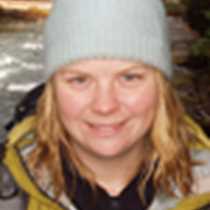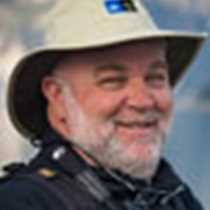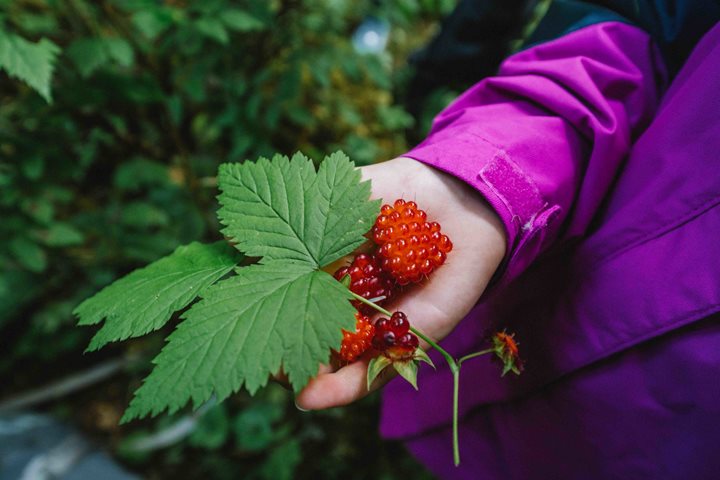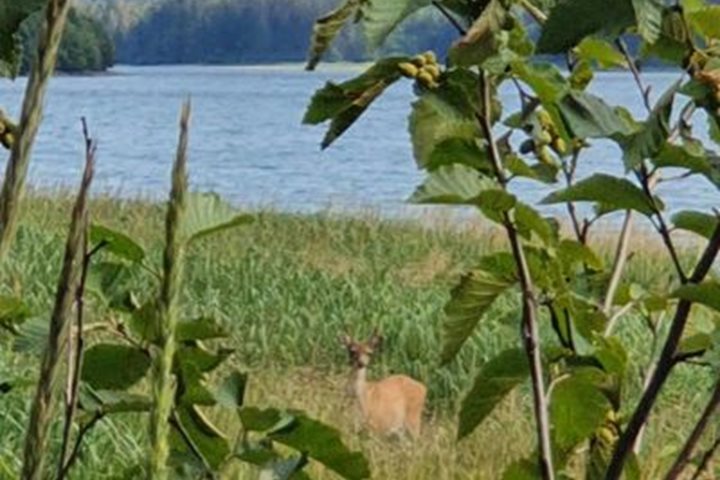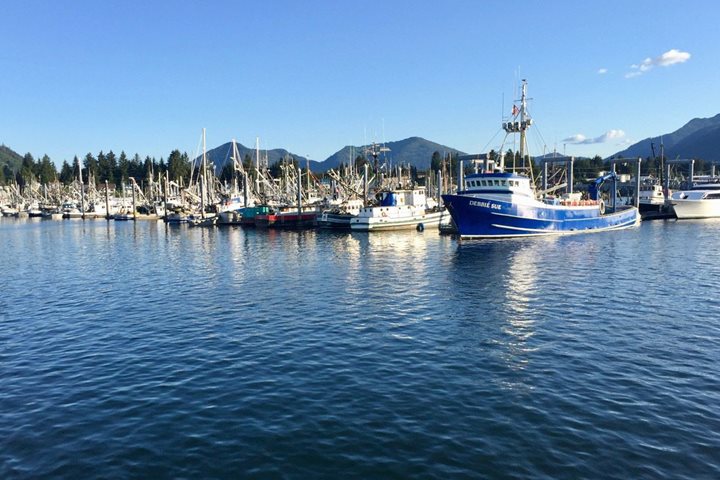This morning, we awoke to another warm sunny day in Southeast Alaska. In the meadow at the end of Sitkoh Bay, brown bears lumbered through the thick sedges. The glassy water reflected the blue sky. A steep, rough-rocked beach served as our staging area for the morning – a place where we could meet for our morning activities. An old logging road provided the perfect path for our walking explorations. Tall red alders lined the sides of the road forming a lime green leaf canopy. Salmon berry and thimble berry bushes filled the understory. In some places, the cow parsnip and other vegetation around the salmon berry bushes was trampled - the berries were gone, foraged on by bears. Further evidence of bears in the area was scattered along the road, in the form of large piles of bear scat. Inspection of the bear scat indicated, in addition to eating berries, the bears had been eating sedges. Unlike banana slugs we have seen on other walks during our trip, many of the banana slugs on this walk were white and incredibly numerous. Although the road was a relatively flat, consistent surface, care had to be taken to avoid stepping on banana slugs or in bear scat.
While some explored the land, others explored the water. Kayaks and stand-up paddleboards provided great platforms for getting out on the water. In the afternoon, some courageous individuals took the plunge - jumping, diving, or flipping - into the chilly waters. Others watched from the decks of National Geographic Quest where they stayed dry and warm.
Our afternoon and evening were filled with marine mammals. A presentation by naturalist Steve Zeff started us off. Then, one fluke, two flukes…seven flukes were raised and gracefully disappeared – seven humpback whales within feet of one another. All of the sudden, after a couple of minutes underwater, all seven humpback whales surfaced, mouths open, filled with herring and sea water. The bubble-net feeding humpback whales continued their pattern of diving and surfacing, working their way north in Chatham Strait, along the shore of Admiralty Island. As the shoreline changed, the consistency of bubble-net feeding diminished and we resumed our exploration of Chatham Strait. Later in the day, a couple of Dall’s porpoises, incredibly fast swimming, small marine mammals, approached the ship to ride the bow and wake waves. To round out our day, naturalist Adam Maire told us about the fur trade in Alaska.
The moon was rising over the mountains, beyond the calm water of Chatham Strait, as we said goodnight to another day of exploration in Southeast Alaska.



